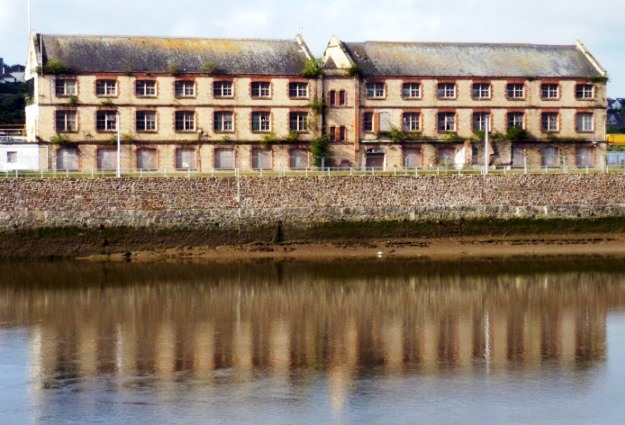
Barnstaple’s Oliver Buildings on Top Ten Endangered Buildings list
Former Arts & Crafts furniture factory's owner urged to act to avoid further decay after rejecting local building preservation trust offer

Oliver Buildings, Barnstaple, Devon (Grade II, 1888, William Clement Oliver)
National architectural charity, the Victorian Society, has included Barnstaple's Oliver Buildings on its 2016 list of the Top Ten Endangered in England and Wales. The owner has appeared to have stopped fighting the buildings' listed status, but North Devon Council must ensure that they are not left decaying with no plans being brought forward. For the first time there are no buildings in London and the South East on the list - where the Society had comparatively few nominations. The Society considers that the greater number of buildings nominated from elsewhere may reflect the more difficult development situation in areas like Devon. Griff Rhys Jones, Victorian Society Vice President, has urged people living near the buildings on the list to ‘seize the opportunity' and campaign to save them.
The Grade II listed Oliver Buildings occupy a prominent riverside site in Barnstaple. William Clement Oliver designed the Shapland and Petter multi-coloured-brick factory, showroom and office complex in 1888. Due to a disastrous fire which destroyed the firm's previous works the buildings use an innovative combination of fireproof and fire-retardant construction, compartmentalisation and a sprinkler system. Shapland and Petter originally used advanced American machinery to produce high-quality, mass-produced Arts and Crafts furniture. Barnstaple's biggest employer for many years, the buildings closed in 2009.
A developer who bought the site repeatedly fought to overturn the building's recent listing, even backed by a local MP. Concerns over their future were compounded by North Devon Council leader Des Brailey mistakenly stating that Grade II-listing does not protect the buildings' interior. After rejecting an offer by the local building preservation trust to buy the buildings, the developer must now produce plans incorporating the buildings without any further delay allowing them to decay further. Pictures are here.
The national exposure from inclusion in the Society's Top Ten often focuses attention on the buildings which can help save them. Full details of all the buildings in the 2016 Top Ten, and updates on positive developments for last year's buildings, can be found here. The Society has also published an updated campaigning guide for people concerned about buildings which didn't make the list.
Victorian Society Director, Christopher Costelloe, said: ‘I hope inclusion in the Top Ten will spur North Devon Council and the owners to urgently set out plans to bring the Oliver Buildings back into use. Simply stating that the buildings will be included in plans is not enough. These buildings need urgent action to prevent further decay. Retaining historic buildings like those in the Top Ten is vital to maintaining local identity and creating places in which people want to invest, live and work'.
Griff Rhys Jones, Victorian Society Vice President, said: ‘The nationally important buildings on the Victorian Society's Top Ten list are in dire need of help. Many of them are in prominent locations in their towns and cities. Following my experience with the Hackney Empire I know how difficult finding funding can be - especially outside London. However, restoring important historic buildings is worth investing in as it can be a catalyst for wider regeneration. I hope people living near these buildings will seize this opportunity and campaign to save them. Ultimately, it is the support of local people which will ensure that they are not lost forever.'
